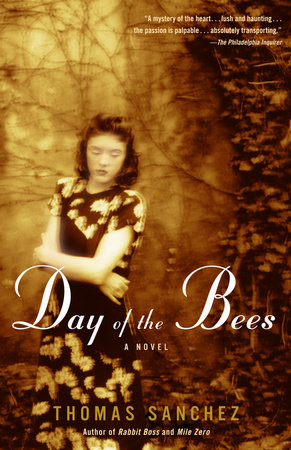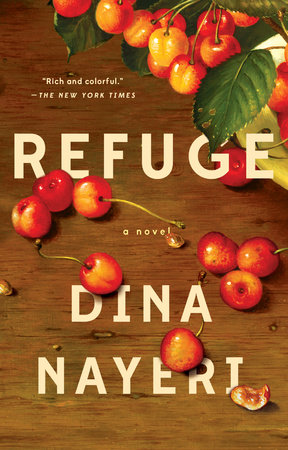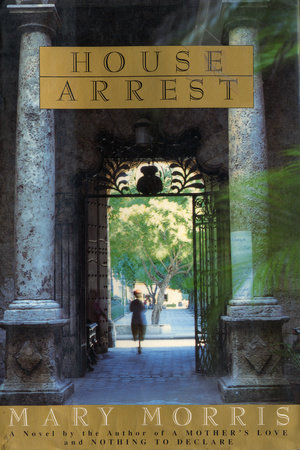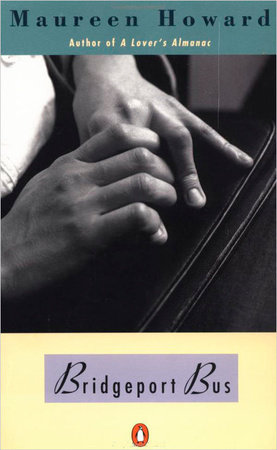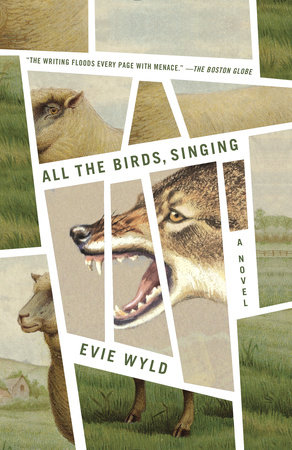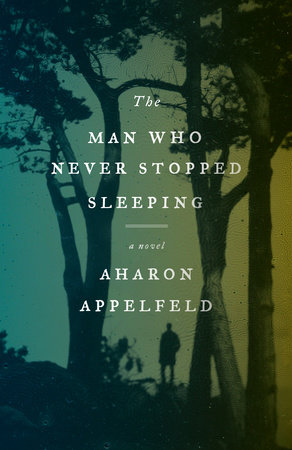A Conversation with Thomas Sanchez author of DAY OF THE BEES
Q: Where did you get the idea for Day of the Bees?
A: One afternoon I had lunch in a small village in an isolated part of Provence with an expatriate American woman. When the lunch was over, I asked my hostess if she knew of a famous artist’s mistressmuse who had lived in the village since the outbreak of the Second World War. The rumor was that the woman had actually been cruelly abandoned there by the artist. The expatriate assured me that the muse was not only alive, but lived next door. "Then," I said, "you must be good friends?" The expatriate answered, "Oh, no, she never speaks to me, never speaks to any women. She speaks only to men–three men: the grocer, the pharmacist, and the postman. She lives so close, and yet is such a larger-than-life mystery."
This story stayed with me, and I often wondered what happened between the artist and his muse. Why would a famous painter abandon such a young beauty? Why her reclusiveness over the years? What if he had not abandoned her, but she had abandoned him? I became fascinated as to the truth; not the historical reality of these people, but the fateful consequence of their passion. What fatal secrets were being concealed? What historical events combined to abort such profound love?
During that summer in Provence, I also became fascinated by the story of another woman. She had arrived in France at the turn of the century, an orphan from Russia, her only identity, ironically, was a small crucifix on a chain around her neck (crucifixes were sometimes placed on orphaned children who were smuggled out of Russia during this time to protect them from virulent anti-Semitism). As a young woman, she was active in the French underground during World War II, the only woman in her cell of Resistance fighters. The cell was betrayed, the men shot, and the woman crucified, nails pounded through her hands to the door of the village church. This story fused in my mind with that of the abandoned muse, and together they provided an emotional map for what is now, after ten years of writing, Day of the Bees.
Q: Day of the Bees is a dramatic departure from your previous novels. What led to this change?
A: Much of language is about landscape, atmosphere, and architecture. In my novel Rabbit Boss, the landscape was physical, immense, a hundred-year history of a California Indian tribe played out in the majesty of the Sierra Nevada mountains. I had to use language to literally build those mountains in order for the stage to be set. In my novel Mile Zero, the setting is Key West, an island. Islands are fickle, ever-changing, subject to winds, tides, extreme temperatures. The language of Mile Zero had to capture that atmosphere; it had to be ephemeralized, a heated-up place to explode human emotions. Day of the Bees, on the other hand, is rooted in the landscape of Provence and Mallorca, but its true architecture is the human heart, its desires, frailties, faults, and nobilities. Thus the language was a departure for me in that I wanted a straight line to the heart–an emotional simplicity that carried an immensity of nuance.
Q: One can certainly draw comparisons between your fictional Spanish artist Francisco Zermano and Pablo Picasso, also quite famous for his female muses. Is this intentional?
A: Zermano is in that line of Spanish painters from Velazquez, to Goya, to Picasso; he is wind, fire and earth; Herculean, protean, vulnerable, speaking in the tradition of passionate Spanish tongues from the classical Gongorra to the celebrators of the mundane and the sublime, Pablo Neruda and Federico Garcia Lorca.
Q: Why do you think the idea of the muse continues to fascinate us? How would you define a muse?
A: The idea of the muse fascinates some, repels others. It is an idea much debated, debunked, lamented, or heralded. How the muse is perceived in art, history, and life no longer fits into one interpretation or smug translation. Let’s get right down to it: what drives one to create? Is the muse a person or an ideal? Is the muse a prescribed aesthetic, or a released anarchic energy that atomizes and takes holy shape in something called a work of art? It’s about perception and whose eye perceives it.
Q: Many people think of a muse as a woman on the sidelines of a great man. Louise Collard is exactly the opposite–a woman who separates herself from her lover and endures great danger and violence for the sake of her country. One might actually argue that Zermano is the muse that inspires her involvement in the Resistance. Would you agree?
A: Let me answer that question by backing up. My father was killed at the age of 21 on an aircraft carrier in the South Pacific, three months before I was born. My own mother’s resolve, at age 18, to take a stand against her personal horror, to not let it devour and destroy, but to shape her pain as an arrow of release, showed me a course of action that a woman can take, using the loss of ideal love as a shield and a motivation to protect the living. This is what inspires the heroics of Louise, in another country, on another battlefield.
Q: What drew you to the idea of bees as a recurring presence throughout the novel? Does it have something to do with the idea of a society ruled by females?
A: For all the obvious reasons, the bees are what they are and what they are not-the text must be read closely, especially when Louise is saved from being gang-raped by a miraculous cloak of bees enshrouding her naked body. The bees become a multifaceted metaphor, from the center of the hive, the natural universe being the ultimate prevailing force, to the Day of the Bees also representing the time in France of German occupation. Louise, in this instance, is France, a woman betrayed by her brethren, her body physically occupied by the enemy. The great calamity is that her child, the offspring of this Day of the Bees, is fathered both by her lover and her tormentor. Such is the history of France at that time.
Q: Why did you choose to tell a major part of this story through letters?
A: When I was fifty, my mother gave me the love letters written to her by my father before his ship was torpedoed. What I first thought was that after fifty years, she could finally entrust the letters to me. Later I realized that wasn’t the case. It took fifty years before she was emotionally capable of parting with the letters. It had to do with her, not me. Louise’s letters are also "discovered" fifty years after they were written, their contents revealing the most personal of acts, and illuminating with the candle of history the agony of living by choices one makes when young and in times of unrelenting duress. Louise knew that if her letters were received by her beloved, Zermano, in her lifetime, the emotions that had enabled them both to survive would be untethered, would tear free. The letters aren’t so much a telling of the story as their existence proves they are the story.
Q: In reading the intimate, and often extremely erotic, letters of Louise and Francisco, one can’t help but feel slightly voyeuristic. Was this intentional on your part?
A: All fiction is voyeuristic: the reader watches the author watching. But by using letters, I was able to slyly make of the reader a voyeur, an invader of privacy, a discoverer of secrets, since the themes of voyeurism, of privacy, of secrets kept and revealed, are so important to the book. And as we know, when secrets are present, violence is never far away, nor eroticism; thus the castle of the Marquis de Sade is not far from Louise’s village.
Q: Do you think private letters of public figures should remain private or be made available for public consumption?
A: It is quite simple–a person with private letters who keeps and does not destroy them is implicitly sending them off to the future, to reside forever in the great pool of public information.
Q: What do you see as the connection between love and violence, between art and war?
A: There is no act more violent to the self than to truly love another, let’s begin there. Some are brave and will open themselves up to the demolition of the heart for this chance to embrace something utterly beyond the self. Others, just as brave but perhaps more boring, keep themselves shut up, sealed off from such calamity.
As to the connection between art and war, they say all sport evolved from war. If this is true, then can we say war follows art, as destruction follows creation? How can the greatest creation–the human–become the greatest destroyer? Zermano faces this dilemma head-on, acknowledging and accepting his baser instincts in order to defeat them with an act of violent hope, a creative affirmation, for it assumes eyes will exist in the future to take the measure of its meaning.
Q: What led you to make Ramon Llull, the 13th-century mystic philosopher, a rather important influence in this novel?
A: It’s interesting that Ramon Llull is enjoying a wave of rediscovery and adulation in Europe, and is thought of as someone between Mick Jagger and Moses, as a profound philosophical music-maker and radical thinker. What drew me to him was his history. As a young man he was a spectacular seducer, a Don Juan who lived for love, inspired by the physical beauty of women. When the woman he loved was tragically stripped of her beauty, Llull’s moment of truth came-he abandoned his love and fell from grace. After that he renounced material goods and the pleasures of the flesh, and sought solace and forgiveness in messianic fervor. Ultimately he was stoned to death in North Africa while proselytizing to the Arabs that the Jews, Christians and Moslems were all parts of one universal religion.
To understand the soul of Zermano one must appreciate how his torment parallels that of Llull. After Zermano loses Louise, he turns in his painting to the subject of war and devastation; he is seeking, in a darkened world, a reflection of Louise’s brilliant spirit to light his way back to redemption. In life, Zermano’s redemption is not possible until he learns the ultimate price Louise paid in her journey from the profanity of war to the sacred absolution of personal grace.
AboutThomas Sanchez:
Thomas Sanchez was born in Oakland, California. As a young man, Mr. Sanchez worked on cattle ranches in the Sierra Nevada mountains. He was involved in many of the major cultural and political clashes of the mid-1960s in Berkley and San Francisco and in the late 60s moved to Andalucia, Spain. After returning to the U.S., he became involved in the Indian takeover of the town of Wounded Knee in the Black Hills of South Dakota, site of an infamous Sioux massacre in the 1800s. Mr. Sanchez acted as a scout and tracker, escorting people and supplies through the forbidden free-fire zone set up by the Army National Guard.
Mr. Sanchez is the recipient of literary fellowships from the National Endowment for the Arts and the Guggenheim foundation. In 1996 he was inducted by the French Ministry of Culture into the Ordre des Arts et Lettres in recognition of his novels Rabbit Boss, Zoot-Suit Murders, and Mile Zero, which have been published in more than fifty international editions and translations. Mile Zero (Knopf, 1989) was a New York Times Notable Book.
Mr. Sanchez’ experiences fused in his first novel, Rabbit Boss, which was named to the San Francisco Chronicle‘s "Western 100 List of the Best 20th Century Fiction." After the publication of Rabbit Boss, Mr. Sanchez moved to an adobe hacienda in the mountains above the Santa Barbara Mission, where he focused on the writing of Zoot-Suit Murders (Vintage 1991), which concerns the political upheaval caused by clashes between barrio gangs and Los Angeles police and federal forces during World War II. In the 1980s Mr. Sanchez moved to the Florida Keys, restoring a sea captain’s house built in the 1860s and doing research for his Key West novel Mile Zero, which spans the period from 19th century ship-wreckers to modern-day drug smugglers and gun-runners. He also traveled in El Salvador and Guatemala during the height of their civil wars.
Mr. Sanchez spent much of the 1990s in Paris and Provence conducting interviews and gathering material for his new novel, Day of the Bees (Knopf, 2000). It is a love story set during World War II and centers on a woman’s parting from her lover, a famous painter, her subsequent involvement with the French Resistance, and the discovery of their correspondence by a present day art historian.
Mr. Sanchez currently resides in San Francisco, California.
